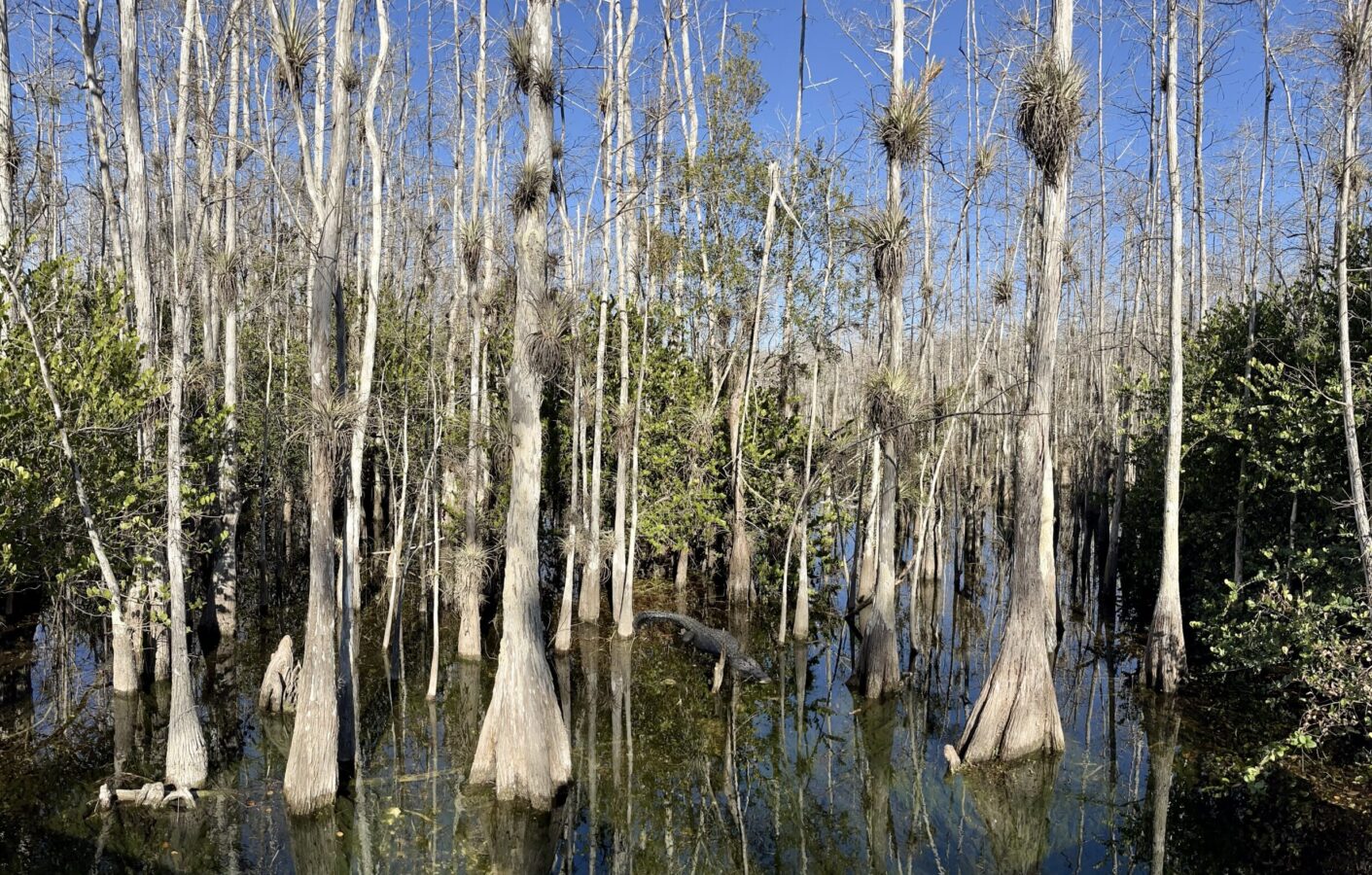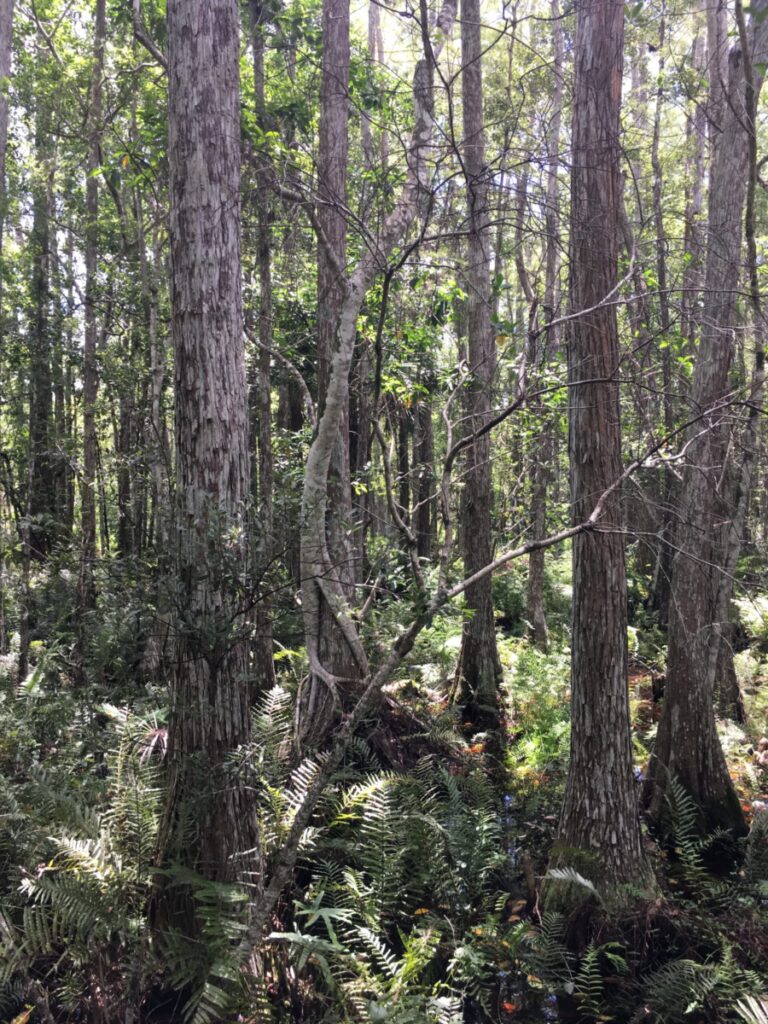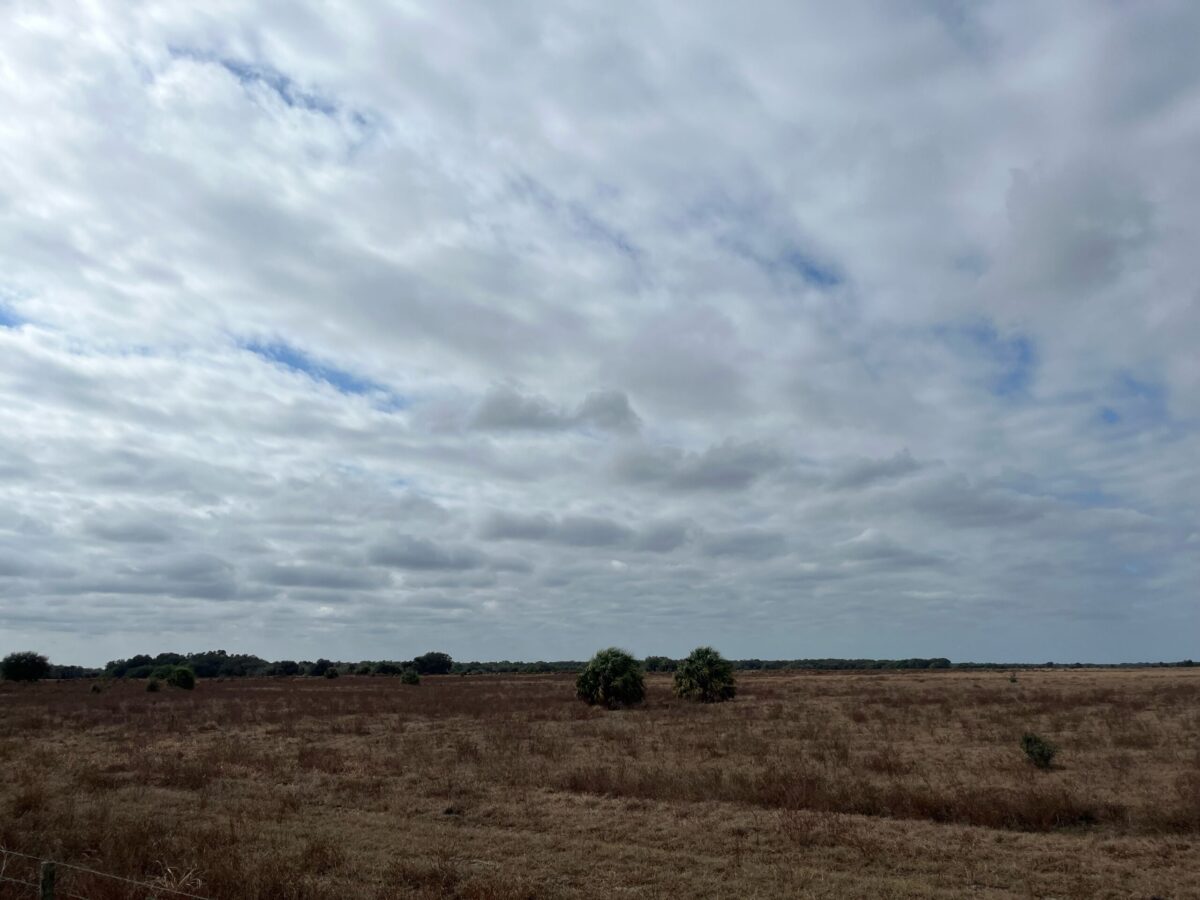
Spot These 10 Plants of the Everglades!
Spring is officially here! With weather warming up, there is still a lot of time to enjoy Florida and the Everglades before Hurricane Season. Springtime in Florida brings warmer daytime temperatures, while still supplying cooler nights and lower humidity. But, it also brings with it the beauty of new plants. While many plants flower year-round in Florida’s sub-tropical climate, may others blossom during the change that come with spring. Springtime brings new lush green plant life, as water also begins to come back into the Everglades at this time with fresh rainfall. But, what are some of these native Florida plants? Florida, and the Everglades, is known for its biological diversity. This extends to its plant life! This week, join us to learn all about native plants of the Florida Everglades, why they are so important, and how you can identify them in the wild.
In our featured image for this week, you can see a scene taken in the Big Cypress National Preserve (BCNP). If you recall, we talked about BCNP in a previous blog post when exploring Seminole customary use rights. This preserve encompasses 729,000 acres of swampland, with diverse plant and animal populations. How many native Florida plants can you spot in this scene? How about animals?
The Importance of Plants in the Everglades
Plants are a vital part of the biological diversity of the Everglades. In the wetlands environment they are primary producers. This means they trap sunlight in the form of chemical energy, which animals then eat. Subsequently, plants are the base of the food chain, which all other organisms depend on. Often, they provide food and shelter for the diverse animals, insects, fish, and birds that inhabit the Everglades ecosystem.
Below, we will look at ten unique native Florida plants that you may see and identify on your Everglades excursion. But, this is by no means a comprehensive list! There are “about 750 native seed-bearing plants in the park, with over 160 plant species (nearly a fourth of the park’s native plant species) listed by the State of Florida as threatened, endangered or commercially exploited.” That is a lot of plants – how many can you identify?
Ten Native Plants of the Everglades:
1. Cypress
Two types of cypress trees grow in Florida: bald cypress and pond cypress. Bald cypress usually grows near streams, rivers, or swampy areas with slow moving water. In the wild, they can live up to 600 years and be up to 150 feet tall! Pond cypress generally grows along swampy areas, as well, although it tolerates drier conditions quite well. Bald cypress is a very recognizable tree, with tiny, flat, needle-like leaves that grow at a right angle to the twigs. Their leaves are bright green in the spring and copper-colored in the fall. Cypress trees have very distinct, flared trunks that bulge out. This allows them to retain and store water. In very wet conditions, they also grow bumpy, aboveground protrusions called cypress “knees.” There are several bald cypress in our featured image this week, and some “knees” are visibly sticking out of the water!

Airplant, NPS Photo
2. Bromeliads
Bromeliads, also known as airplants, are present throughout the Everglades and the rest of Florida. What makes them unique is they do not need any soil to grow. Water and nutrients are absorbed directly through the leaves, and any roots they have merely anchor them. In our featured image, you can see several airplants anchored to bald cypress trees, with grey-green leaves. All bromeliads are in the pineapple family. The majority of airplants you will see in the Everglades are from the genus Tillandsia, and look like the top of a pineapple, or sometimes Spanish moss. Bromeliads thrive in cypress domes, hardwood hammocks, mangrove forests, and many other habitats. Take a walk down the Ah-Tah-Thi-Ki Museum Boardwalk and you will be sure to spot dozens of airplants. Additionally, airplants provide shelter and water for other organisms like frogs, insects, and even snakes!
3. Orchids
Orchid diversity in the Everglades is unparalleled. In fact, Everglades National Park has the highest orchid diversity in any NPS unit in the United States. Terrestrial orchids can be found in a variety of different habitats, including hardwood hammocks, wetlands, prairies, and marshes. They grow from the ground. Epiphytic orchids, by contrast, grow in the trees. They get water and nutrients from the air, rainfall, and surrounding organic debris. But, epiphytic orchids do not harm the trees that they live on. To cope with the lack of water in the treetops, epiphytic orchids have thicker aerial roots that let them rapidly absorb and store water. Everglades National Park supports thirty-nine orchid species. Below, you can see one of the most widespread of Florida’s epiphytic orchids: the butterfly orchid. Have you ever seen an orchid in the wild?

Butterfly Orchid, Wikimedia Commons
4. Grasses
Have you ever heard of the “River of Grass?” Marjory Stoneman Douglas dubbed the Everglades the “River of Grass” in 1947, the same year that Everglades National Park was established. She used the term to describe the shallow, slow moving water that makes up the Everglades’ unique sheet-flow through sawgrass marsh lands. If you recall, Lake Okeechobee would spill south and feed this vast river. There are over 100 species of “true” native grasses in the Everglades, and dozens of species in other native grass families. In addition to sawgrass, actually in the sedge family, marl prairies in the Everglades are dominated by muhly grass. The recognizable, billowing plumes of muhly grass are purple in the fall when flowering. Other common native species of grass that you can find in the Everglades are blackrush, arrowfeather, Florida bluestem, and Eliot’s lovegrass. Typically, these grasses will grow about 4 feet tall.

5. Gumbo-limbo
The gumbo-limbo tree is a very recognizable, semi-evergreen tree native to South Florida. Outdoor enthusiasts identify gumbo-limbo trees by the reddish-brown papery peeling bark. Gumbo-limbo’s even have the nickname the “tourist tree,” as the peeling bark resembles the sunburnt skin of a tourist! They can reach up to sixty feet in height, but are often smaller especially when used for landscaping purposes. Gumbo-limbo trees are very wind tolerant, which is useful in a hurricane prone environment.
6. Mangroves
Mangroves are an important part of the Everglades ecosystem, and particularly vital in the coastal areas in which they grow. They flourish in brackish water, where salt and fresh water meet and mix. You can identify mangroves by their dense root system, which rises out of the water to help the trees adjust to the rise and fall of the waterline. This root system also stabilizes the shoreline, making them an incredibly effective defense against summer hurricanes. There are three native mangrove species in Florida: red mangrove, black mangrove, and white mangrove. All three species support a diverse number of fish, insects, and animals. Red mangroves are the species people most easily recognize as mangroves, as they have tall prop roots and tend to “walk” horizontally as they grow. Over 90% of Florida’s commercially harvested fish depend on mangrove estuaries for survival.
7. Strangler Fig
This native vine-like plant is actually a type of ficus tree! Usually, strangler figs start off as an epiphyte (much like certain orchids mentioned above). But, unlike orchids, strangler figs eventually strangle the host tree, with heavy roots that become self-supporting. They are incredibly fast growing and can grow 60 feet in height. You can identify a strangler fig by their attachment to the host tree, as well as their thin, vine-like growth when they are young. Strangler figs have shiny, dark green leaves with red and even purple fruit in spring and summer. Below, you can see a strangler fig strangling a cypress tree. This photo was taken from the Ah-Tah-Thi-Ki Museum Boardwalk in 2017.

8. Wild Coffee
A native shrub with waxy, dark green leaves, wild coffee gets its name from the small red fruits produced in summer and fall that resemble true coffee beans. Interestingly, wild coffee is in the same family as true coffee, although they are not the same species. When flowering, they produce clusters of tiny white flowers during springtime and summer. Right now, you should be able to see some wild coffee plants flowering! Their leaves are about six inches long, with distinct veins on the upper side and fine hairs on the underside. Butterflies are particularly attracted to the nectar in the flowers, so you may be able to spot some this spring. If you are taking a walk on the Ah-Tah-Thi-Ki Boardwalk, keep your eyes open, as you should be able to see some during your walk!
9. Lichens
Lichens are one of the most interesting and diverse plants you can view in the Florida Everglades! But, technically they aren’t even one single organism. Lichens are a composite of fungi and green or blue-green algae (cyanobacteria). This symbiotic relationship benefits both the fungi and the algae. Fungi can’t produce their own food via photosynthesis, but algae can. The fungi provide a place for the algae to exist in full sun, and in turn the algae provide food for both parties.
In the Everglades, lichens exist in every terrestrial habitat, although the lichen diversity is richest in areas where there are a lot of trees. They come in a variety of colors, including red, orange, yellow, green, and white. Taxonomically, they are divided into four distinct growth forms: crustose (crust-like), foliose (leafy), fruticose (shrubby), and squamulose (scale-like). When looking at a tree, if you see something that looks like a smudge, or oddly colored peeling bark, look closer! It just may be a lichen.
10. Succulents and Cacti
Succulents, in south Florida? Who knew! While we most often think of cacti and succulents in desert environments, they are actually quite prolific in sub-tropical and tropical places like the Everglades. Native Florida species actually enjoy heavy rainfall, as long as the soil itself is well drained. There are several species of prickly-pear cactus, identifiable by their fleshy green paddle-shaped pads and bright flowers, that can be found in the Everglades. Unfortunately, there are also several endangered native cacti, like the Simpson’s applecactus and the mistletoe cactus. But, a variety of non-endangered succulents can also be found in the Everglades. This includes many that are epiphytes and grow without soil.
Springtime is the perfect time to brush up on your native plants of the Everglades. It is also the perfect time to get outside and identify them for yourself! So, take advantage of the weather and experience the Everglades, and its rich plant diversity, today.
Author Bio
Originally from Washington state, Deanna Butler received her BA in Archaeological Sciences from the University of Washington in 2014. Deanna moved to South Florida in 2016. Soon, she began working for the Seminole Tribe of Florida’s Tribal Historic Preservation Office. Deanna was the THPO’s Archaeological Collections Assistant from 2017-2021. While at the THPO, Deanna worked to preserve, support, and process the Tribe’s archaeological collection. She often wrote the popular Artifact of the Month series, and worked on many community and educational outreach programs. She lives in Fort Myers, FL with her husband, son, and dog.




Karen
GREAT list of plants to remember from our trip to Flamingo in South
Everglades.
Feb 2024. Thank you!